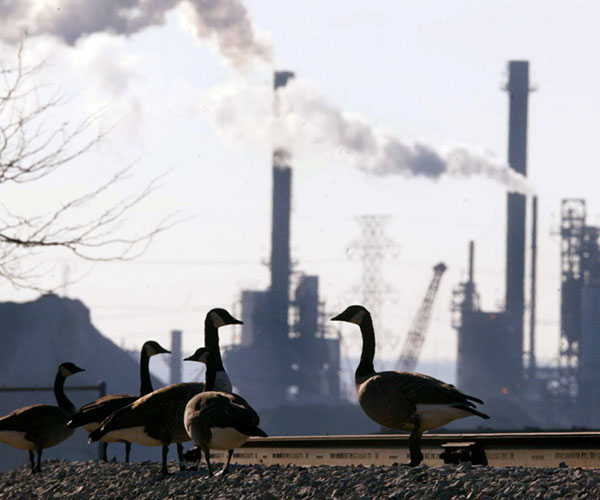While demand for energy isn’t dropping, alarms raised by burning fossil fuels in order to get that energy are getting louder. Solutions to cancel the effects of carbon dumped into our atmosphere include carbon capture and storage or bio-sequestration.
This zero-emission energy uses technical means as well as plants to take in and store carbon emissions. Another route is to use solar photovoltaics to convert sunlight directly into electricity and only sequester the carbon emissions from the production of solar cells.
The Giving Tree Won’t Give Enough for Carbon Neutral Coal
Zero-emission energy has been offered as a way to offset the carbon dioxide production while still maintaining coal’s electricity generation. That’s done through carbon capture and storage in saline aquifers, or by using both enhanced oil recovery and bio-sequestration through planting trees and other plants to suck up and store carbon.
In a new study published in Scientific Reports, a Nature publication, Michigan Technological University researchers analyzed how much land would be required to offset greenhouse gases created by traditional coal-fired plants or coal-fired plants with carbon sequestration and then neutralizing the remaining carbon pollution with bio-sequestration. Then they compared these routes to how much bio-sequestration would be required to offset greenhouse gases produced when making solar panels.
For the first time, researchers have shown that there is no comparison. It’s not even close.
In fact, coal-fired power plants require 13 times more land to be carbon neutral than the manufacturing of solar panels. We’d have to use a minimum of 62 percent of U.S. land covered by optimal crops or cover 89 percent of the U.S. with average forests to do it.
“We know that climate change is a reality, but we don’t want to live like cavemen,” says Joshua Pearce, professor of materials science and engineering and electrical engineering at Michigan Tech. “We need a method to make carbon neutral electricity. It just makes no sense whatsoever to use coal when you have solar available, especially with this data.”
Too Big to Solve: Coal-Fired Power Plant Emissions
Researchers drew these conclusions from over 100 different data sources to compare energy, greenhouse gas emissions and land transformation needed to carbon neutralize each type of energy technology.
They claim a one-gigawatt coal-fired plant would require a new forest larger than the state of Maryland to neutralize all of its carbon emissions.
Researchers also found that applying the best-case bio-sequestration for all the greenhouse gases produced by coal-fired power plants, would mean using 62 percent of the nation’s arable land for that process, or 89 percent of all U.S. land with average forest cover.
In comparison, solar cells require 13 times less land to become carbon neutral and five times less than the best-case coal scenario.
“If your goal is to make electricity without introducing any carbon into the atmosphere, you should absolutely not do a coal plant,” Pearce says. Not only is it not realistic to capture all the carbon dioxide they release, but burning coal also puts sulfur dioxide and nitrous oxide and particulates in the air, which creates air pollution, already estimated to cause 52,000 premature deaths annually.
Solar is Better
Pearce says that he and his team were generous to coal-fired power plants in how they calculated the efficiency of carbon capture and storage when scaled up. They also did not consider new ways that solar farms are being used to make them even more efficient, like using higher efficiency black silicon solar cells, putting mirrors in between rows of panels so light falling between them can also be absorbed, or planting crops between rows (agrivoltaics) to achieve greater land use.
Pearce says future research should focus on improving the efficiency of solar panels and solar farms, not on carbon capture of fossil fuel-powered plants in an attempt to become zero-emission energy-not when this data shows it isn’t realistic in order to protect our changing climate.
Journal Reference:
James Gunnar Groesbeck, Joshua M. Pearce. Coal with Carbon Capture and Sequestration is not as Land Use Efficient as Solar Photovoltaic Technology for Climate Neutral Electricity Production. Scientific Reports, 2018; 8 (1) DOI: 10.1038/s41598-018-31505-3















Comments